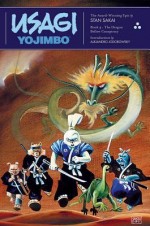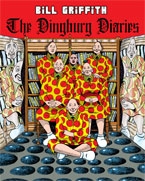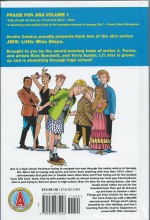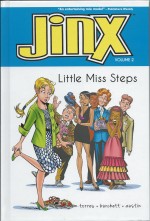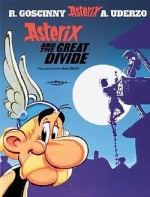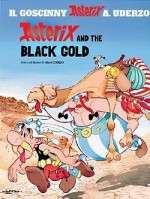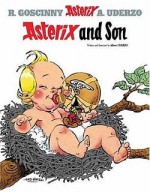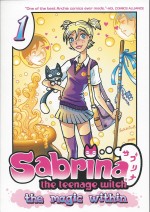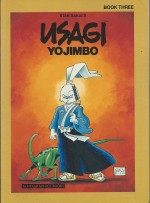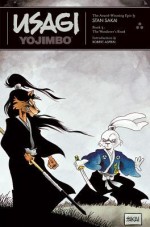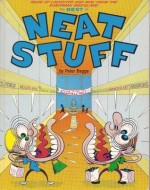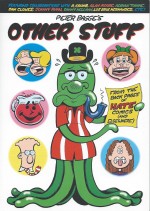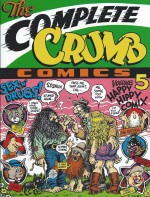
By R. Crumb & various (Fantagraphics Books)
ISBN: 978-0-930193-92-8
This book contains really clever and outrageously dirty pictures, rude words, non-condemnatory drug references and allusions, apparent racism, definite sexism, godless questioning of authority and brilliantly illustrated, highly moving personal accounts and opinions.
If you – or those legally responsible for you – have a problem with that, please skip this review and don’t buy the book.
Really. I’m not kidding…
Robert Crumb is a unique creative force in comics and cartooning, with as many detractors as devotees. His uncompromising, excoriating, neurotic introspections, his pictorial rants and invectives, unceasingly picked away at societal scabs and peeked behind forbidden curtains for his own benefit, but he has always happily shared his unwholesome discoveries with anybody who takes the time to look…
In 1987 Fantagraphics Books began the nigh-impossible task of collating, collecting and publishing the chronological totality of the artist’s vast output and those critically important volumes are now being reissued.
The son of a career soldier, Robert Dennis Crumb was born in Philadelphia in 1943 into a functionally broken family. He was one of five kids who all found different ways to escape their parents’ highly volatile problems, and comic strips were paramount among them.
As had his older brother Charles, Robert immersed himself in the comics and cartoons of the day; not just reading but creating his own. Harvey Kurtzman, Carl Barks and John Stanley were particularly influential, but also comic strip masters such as E.C. Segar, Gene Ahern, Rube Goldberg, Bud (Mutt and Jeff) Fisher, Billy (Barney Google), De Beck, George (Sad Sack) Baker and Sidney (The Gumps) Smith, as well as illustrators like C.E. Brock and the wildly imaginative and surreal 1930’s Looney Tunes and Merrie Melodies animated shorts.
Defensive, introspective and always compulsively driven, young Robert pursued art and self-control through religion with equal desperation. His early spiritual repression and flagrant, hubristic celibacy warred with his body’s growing needs…
From this point onwards, the varied and exponentially impressive breadth of Crumb’s output becomes increasingly riddled with his often hard-to-embrace themes and declamatory, potentially offensive visual vocabulary as his strips grope towards the creator’s long-sought personal artistic apotheosis, and this third volume covers material created and published between 1960-1966 as the self-tormented artist began to find a popular following in a strangely changing world.
Escaping his stormy early life, he married young and began working in-house at the American Greeting Cards Company. He discovered like minds in the growing counterculture movement and discovered LSD. By 1967 Crumb had moved to California and became an early star of Underground Commix. As such he found plenty of willing hippie chicks to assuage his fevered mind and hormonal body whilst reinventing the very nature of cartooning with such creations as Mr. Natural, Fritz the Cat, Devil Girl and a host of others. It is from this period that the engrossing, amazing and still shocking strips in this book stem…
He worked on in what was essentially a creative utopia throughout the early 1970’s but the alternative lifestyle of the Underground was already dying. Soon it would disappear: dissipated, disillusioned, dropped back “in†or demised. A few truly dedicated publishers and artists stayed the course, publishing on a far more businesslike footing as Crumb carried on creating, splitting his time between personal material and commercial art projects whilst incessantly probing deeper into his turbulent inner world.
This particular collection covers the period when the insular, isolated Crumb first began to make a name for himself with a flood of gags, posters, commercial art jobs, short strips and longer material popping up seemingly everywhere. All are faithfully reproduced in this compilation – which makes for a rather dry listing here, I’m afraid – but (trust me) the pictorial output is both engrossing and legendary.
Actually, don’t trust me: buy the book and see for yourselves…
After a photo and cartoon-stuffed (from 1968 sketchbooks) Introduction from the old scallywag himself, praising the effects of mind-altering chemicals and recalling the first heady days of Counter-Culture celebrity, the wave of visual excess and literary freewheeling begins with ‘The Old Pooperoo Pauses to Ponder’: a baroque procession of his fun-loving characters rounded off with a micro strip at the bottom, revealing Eggs Ackley’s opinion that ‘This Kid’s a Scream!’, after which Mr. Natural, Angelfood McSpade and all the rest are reassured that ‘You’re Gonna Get There Anyway’ (all from East Village Other December 1-16, 1967).
Next ‘Mr. Natural, the Man from Affiganistan’ shares more timeless wisdom with resident curious “Straight†Flakey Foont (EVO December 15-30 1968), after which a rush of shorts from EVO January 12-17 begins.
‘Sky-Hi Comics’, ‘Then on the Other Hand…’ are followed by ‘Nuttin’ but Nuttin’, ‘Here She Comes! It’s Hippy!’ and ‘Junior High & his Sidekick Judy Holiday’ from the January 19-25 edition whilst ‘Those Cute Little Bearzy Wearzies/George Gwaltny’ (EVO January 26-February 1 1968) precedes Natural’s inevitable return to act as guru to ‘Schuman the Human’ from EVO February 9-15th.
The Wise one continues in revelatory style when ‘Mr. Natural Meets God’ (supplemented by) ‘Gail Snail and The Walkie Talkies’ from EVO February 16-22, whilst the next weekly issue described how ‘Mr. Natural Gets the Bum’s Rush’, and Schuman declared ‘Let’s Be Honest’ before Crumb confronted the period’s racism head on with customary shocking frankness in ‘Mr. Natural Repents’, ‘Hey, Mom!’ and attendant strip ‘Let’s Have Nigger Hearts For Lunch’ (EVO March 1-7 1968).
Zap #2 June 1968, then provided wry ‘Hamburger Hi-Jinx’ with Cheezis K. Reist and shockingly introduced iconic Bête Noir ‘Angelfood McSpade’ before closing with a warning to avoid cheap imitations from ‘Mr. Natural’.
Bijou #1, from Summer 1968, then supplies a wealth of intriguing, astonishing fare leading with ‘Neato Keano Time!’ before ‘The Big Little Boy’ and ‘Bo Bo Bolinski, He’s a Clown!’ went through their paces. Following that ‘Mr. Spiff’ makes a call and ‘Here They Are! Puppets of your favourite cartoon characters!’ provides paper-dolls of Angelfood and Mr. Natural. The harsh, ironic hilarity all ends with a laidback Bijou Funnies Ad…
The inescapably controversial Ms. McSpade and friends then cropped up in ‘All Asshole Comics’ (Chicago Seed, July 1968), after which covers for ‘Nope #6’ and ‘Nope #7’ (both 1968) are followed here by ‘The Zap Show’ – a captivating art jam with Rick Griffin, Victor Moscoso & S. Clay Wilson.
A ‘Fritz the Cat title page’ then acts as prologue to an outrageous tale of student terrorism and teen licentiousness in ‘Fritz the No-Good’ (taken from Cavalier, September/October 1968), after which you’ll need to rotate the book to be shocked by the interiors of digest-sized Snatch #1 (October 1968): rude and raunchy spoofs such as ‘The Adventures of Andy Hard-on’, ‘Krude Cut-Ups’ and ‘The Fight’ plus assorted gags like ‘Jailbait of the Month’, ‘Hi, Swingers’ and much more…
A rather lovely ‘Janis Joplin: original cover for Cheap Thrills‘ (1968) is followed by
‘The Phonus Balonus Blues’ and ‘Where the Action Isn’t’ (EVO September 27 1968) as well as the cover of that issue – ‘Can the Mind Know it?’
From the October 11 issue of East Village Other comes a barrage of strips: ‘Sleezy Snot Comics’, ‘Mr. Natural’, ‘Booger Buddies’ and more plus an ‘Ad for Head Comix’ whilst the October 18th edition provided both ‘Angelfood McSpade’ and ‘Cum Comix’, and October 25th a ‘Mr. Natural, disguised as a vacuum cleaner salesman, talks to the Housewives of America’ cover.
‘Edgar and Maryjane Crump’ and ‘Crime in the Streets’ both originated in EVO November 1) after which an ‘alternate cover for Zap #3′ segues into the infamous ‘Dirty Dog’ strip from Zap #3 (December 1968).
That underground classic also premiered ‘Mr. Goodbar “Off his Rocker‒, an astounding
‘Atomic Comics Jam’ with S. Clay Wilson, Gilbert Shelton, Victor Moscoso & Rick Griffin, grotesque shorts ‘Let’s Eat’ and ‘Mr. Natural’, ‘Hairy’ and ‘Street Corner Daze.’
Another digest-sized landscape section next reproduces the XXX-rated contents of ‘Snatch #2′ (January 1969) including ‘Look Out Girls!! The Grabbies are Coming’, ‘Down on the Farm’, ‘The Family that Lays Together Stays Together’ and far more before an ‘ad for San Francisco Comic Book Company’ from Bogeyman #2, 1969, leads seamlessly into ‘Don’t Gag On It… Goof On It!’ (Gothic Blimp Works, Ltd. #1, March 1969).
The April 1969 ‘cover for Creem #2′ precedes a stunning spoof of Romance comics with ‘The Bleeding Heart Syndrome’ (Tales from the Ozone #1, 1969) before ‘Shoo Shoo Baby’ and ‘The Pricksters’ (GBW #2, 1969) suspends the black and white barrage to briefly usher in a spectacular ‘Color Section’…
The polychromatic madness begins with ‘Head Comix covers’ (front and back and 1968), keeping up the pressure with the ‘Zap Comix #2 covers’ from December, as well as a ‘Fritz the Cat cover’, the ‘Cheap Thrills’ record cover for Big Brother and the Holding Company and the December 1968 ‘Snatch #1 covers’.
The ribald rainbows end with ‘Snatch #2 covers’ (January 1969) before ‘Flower Children on Broadway’ from Bijou #2 (1969) return us to monochrome merriment, ‘Nutsboy’ (Bogeyman #2, 1969) presages today’s teen obsession with “Slasher-flicks†and ‘Mr. Know-It-All and his pal Diz in What the Fuck’ (with S. Clay Wilson from GBW #3, 1969) continues the dark and bloody mood.
This landmark compilation concludes with Crumb’s contributions to Motor City #1 (April 1969) starting with ultra-independent femme fatal ‘Lenore Goldberg and her Girl Commandos’, after which cool dude ‘The Inimitable Boingy Baxter’ turns Detroit on its head, and mini-mystic Savannah Foomo explores reality with ordinary folk and ‘The Desperate Character’ in ‘Deep Meaning Comics’ and ‘More Deep Meaning Gommigs’, leaving good old Eggs Ackley to wrap thing up in macabre style with ‘Eyeball Kicks’…
If Crumb had been able to suppress his creative questing, he could easily have settled for a lucrative career in any one of a number of graphic disciplines from illustrator to animator to jobbing comic book hack, but as this pivotal collection readily proves, the artist was haunted by the dream of something else – he just didn’t yet know what that was…
Crumb’s subtle mastery of his art-form and obsessive need to reveal his most hidden depths and every perceived defect – in himself and the world around him – has always resulted in an unquenchable fire of challenging comedy and riotous rumination, and this chronicle begins to show his growing awareness of where to look.
This superb series charting the perplexing pen-and-ink pilgrim’s progress is the perfect vehicle to introduce any (over 18) newcomers to the world of grown up comics. And if you need a way in yourself, seek out this book and the other sixteen as soon as conceivably possible…
© 1967, 1968, 1969, 1989, 2004, 2013 Robert Crumb. All contributory art material and content © the respective creators/copyright holders. All rights reserved.

